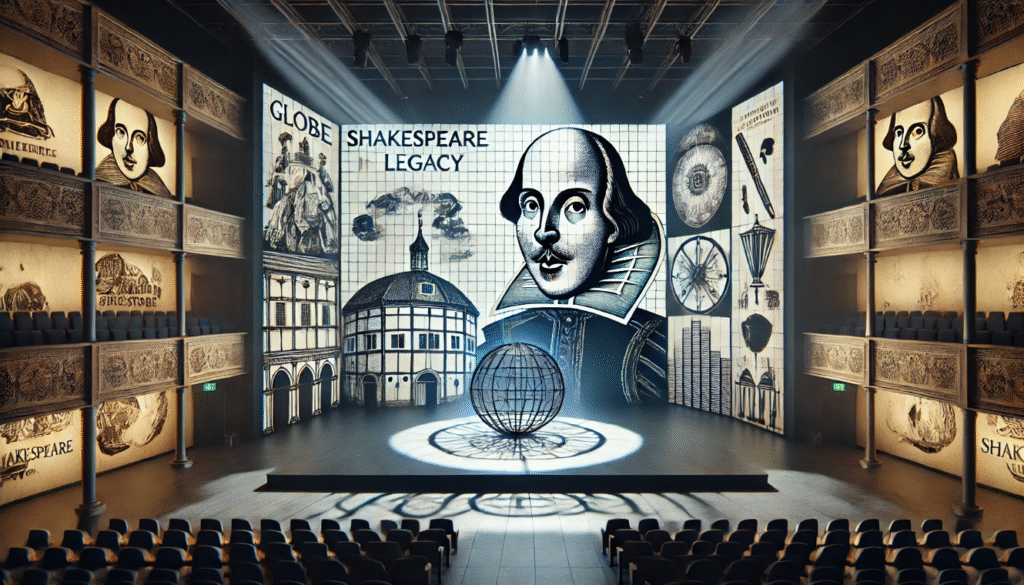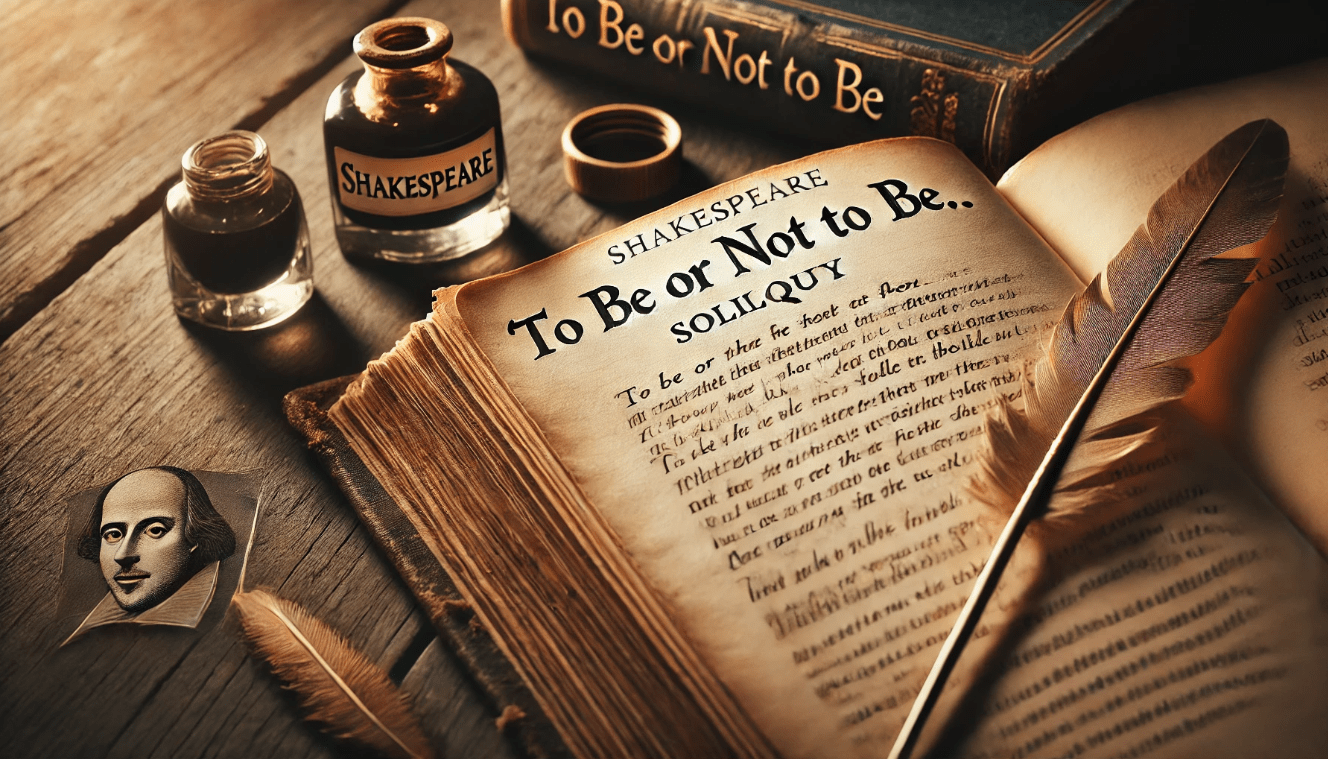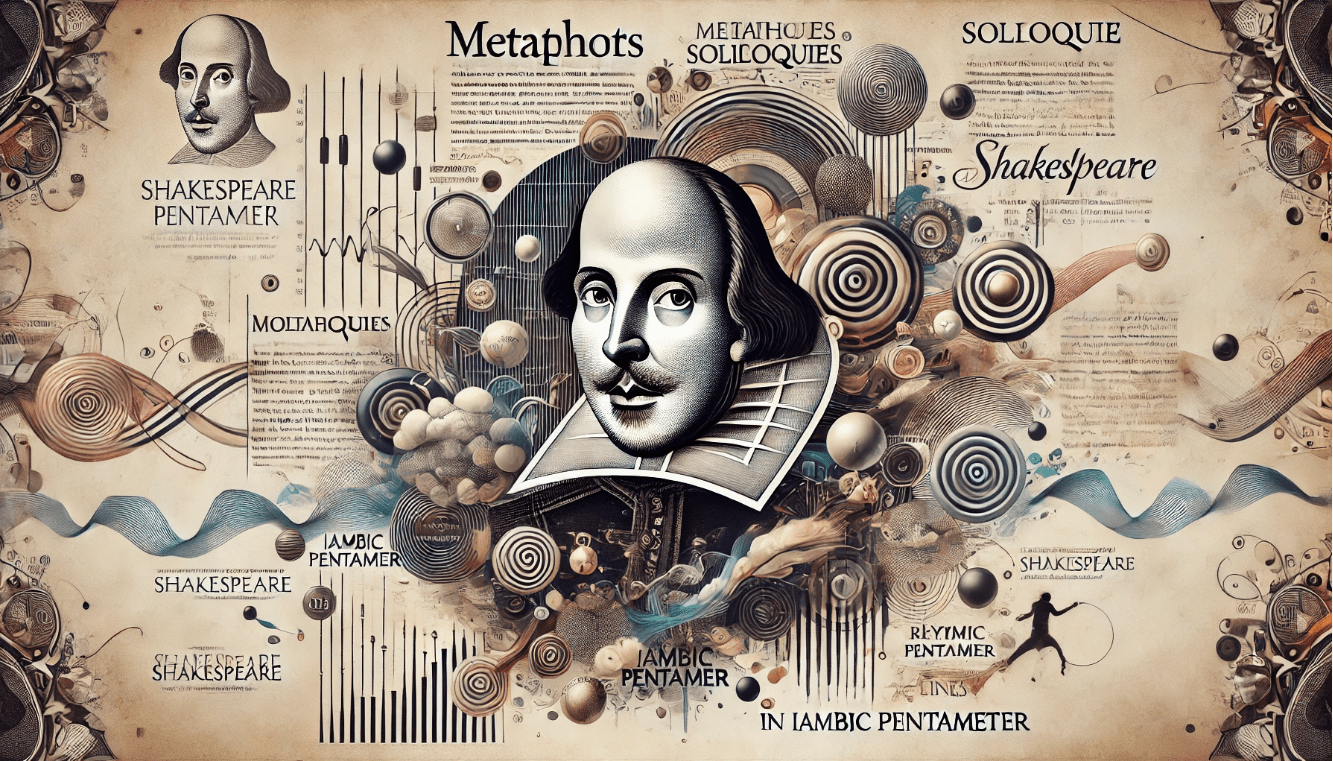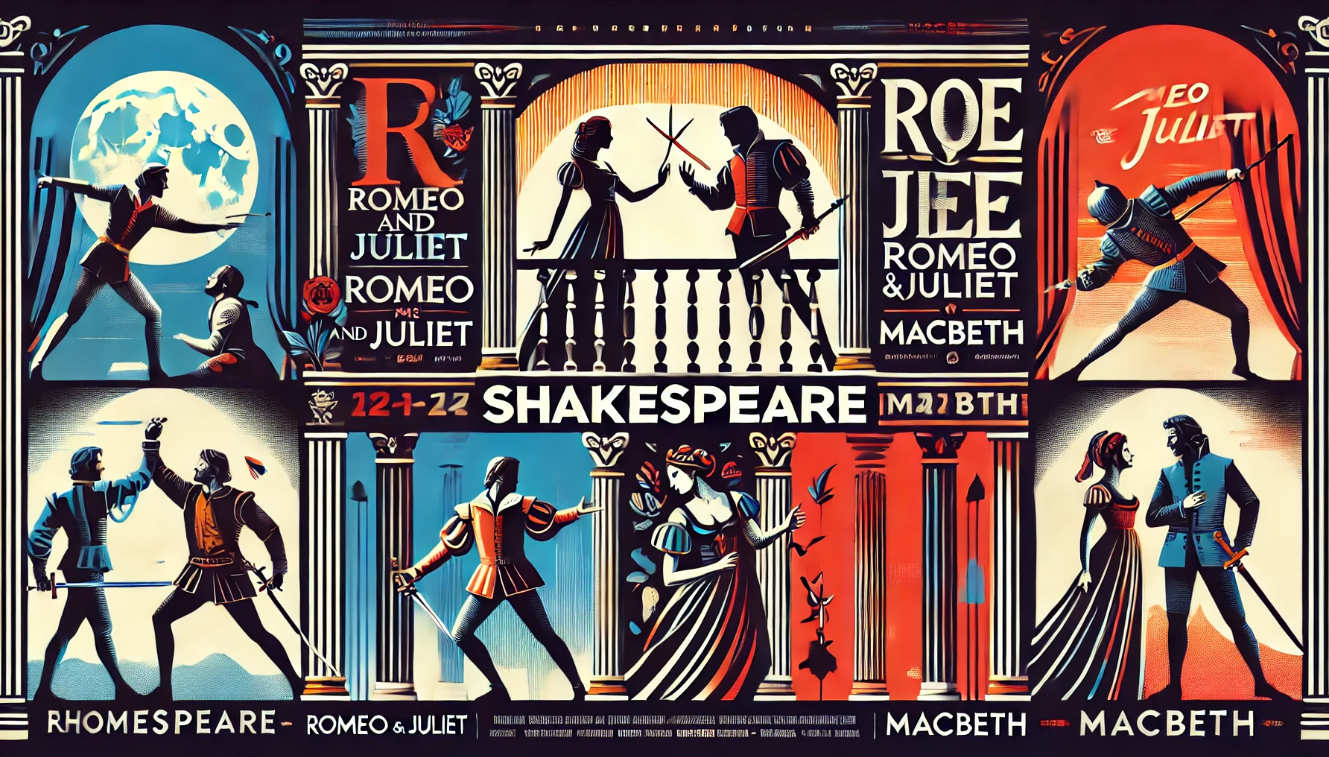
The Impact of Shakespeare on Theatrical Language: How His Legacy Shaped Modern Stage Dialogue and Dramatic Expression
Have you ever wondered why the dialogue in modern theatre feels so much more alive, nuanced, and emotionally gripping? 🎭 A lot of it traces back to one man: William Shakespeare. The impact of Shakespeare on theatrical language is undeniable, and his legacy has shaped how we experience dialogue on stage today. From his innovative use of words to his mastery of dramatic expression, Shakespeare’s influence continues to echo in the works of playwrights, actors, and directors alike.
But how exactly did Shakespeare revolutionize the way we communicate through theatre? And how can we, as modern creators and enthusiasts, tap into this rich linguistic tradition to elevate our own work? In this article, we’ll explore the key elements of Shakespeare’s language and examine how they still shape the powerful stage dialogue and dramatic expression we witness today.
Table of Contents
ToggleI. Why It Matters Today?
Shakespeare’s influence on theatrical language is not just a piece of history; it’s a living, breathing part of modern theatre. His innovative use of language continues to shape how playwrights, actors, and directors craft stage dialogue today. But why should we care about this ancient legacy in the context of 21st-century theatre?

1. Unlocking Deeper Emotional Expression
Shakespeare’s ability to express complex emotions through dialogue is unmatched. His work taught us that words can do more than tell a story—they can capture the deepest corners of the human experience. By understanding his techniques, modern theatre creators can tap into the same emotional depth, making their work resonate more powerfully with audiences. Whether you’re writing a new play or preparing for a role, embracing Shakespearean language tools like rich metaphors and soliloquies can make your work stand out. 🌟
2. Crafting Multi-Dimensional Characters
Shakespeare was a master at creating characters that felt real and multidimensional. His dialogue gave actors the tools to showcase inner conflict, ambition, and vulnerability. In today’s theatre, we still draw from these techniques. Writers and actors who can channel Shakespeare’s understanding of character development will create more engaging and memorable performances. This is especially useful for modern playwrights looking to develop characters that feel authentic, complex, and relatable. 🎭
3. Timeless Relevance in Modern Storytelling
Shakespeare’s themes—love, power, betrayal, and identity—are still highly relevant in today’s world. By using his language as a foundation, we can tell stories that are both timeless and timely. Modern adaptations of his works, or those influenced by his style, continue to captivate audiences worldwide. His legacy proves that great theatre is about universal truths, no matter the era.
II. The Power of Shakespeare’s Language in Theatre

Shakespeare’s language in theatre wasn’t just a means to tell a story—it was a powerful tool that transformed how audiences experience drama. His ability to play with language not only captivated audiences in his time but continues to influence how we create and perform theatre today. Let’s explore the core elements of Shakespeare’s language that give his works their enduring power.
1. Rich Imagery and Metaphor
Shakespeare had an extraordinary gift for painting vivid pictures with words. His metaphors and imagery were groundbreaking, helping audiences visualize emotions, landscapes, and complex ideas. For example, in Macbeth, he refers to life as a “tale told by an idiot, full of sound and fury, signifying nothing.” This vivid metaphor speaks to the chaos and futility Macbeth feels—it’s not just words, it’s a sensory experience. For modern playwrights, using imagery in dialogue can create an immediate emotional connection with the audience. 🌟
2. Soliloquies: The Window to a Character’s Soul
One of Shakespeare’s greatest contributions was the soliloquy—a powerful, introspective monologue where characters reveal their deepest thoughts. Think of Hamlet’s “To be or not to be” soliloquy, which explores the existential dilemma of life and death. These soliloquies give audiences direct access to a character’s inner world, making them feel more connected to the character’s journey. Modern theatre still uses soliloquies to showcase a character’s internal conflict, providing actors the opportunity to truly showcase their range. 🎭
3. The Rhythm of Language
Shakespeare’s use of iambic pentameter—the rhythm of 10 syllables per line with alternating stressed and unstressed beats—was more than just a stylistic choice. It helped emphasize the natural flow of speech while giving actors a structured rhythm to follow. This rhythm made his dialogue both musical and powerful, enhancing the emotional impact. Today, modern playwrights can still use rhythm in their writing to enhance the flow and drama of their scenes. Even though not all plays use iambic pentameter, paying attention to rhythm helps keep the audience engaged. 🗣️
4. Wordplay and Wit
Shakespeare’s language is famous for its clever wordplay. His plays are filled with puns, double meanings, and playful twists on language. These moments not only entertained audiences but also deepened the themes of his works. For example, in Twelfth Night, Feste’s witty dialogue reflects the play’s themes of identity and disguise. By using wordplay, modern playwrights can add layers of meaning to their dialogue, allowing audiences to find new interpretations with each viewing.
5. Universal Truths Through Language
At the heart of Shakespeare’s language is his ability to express universal human emotions—love, jealousy, ambition, and fear—in ways that transcend time. His mastery of language allows his plays to resonate with audiences across different cultures and eras. By drawing from Shakespeare’s ability to express deep truths about human nature, modern playwrights can create works that resonate just as powerfully with today’s audiences.
III. Key Elements of Shakespeare’s Theatrical Language
Shakespeare’s influence on theatrical language lies in his masterful use of specific linguistic tools and techniques. These key elements are not only what made his work stand out during his time, but they also continue to shape modern theatre. Let’s break down the essential components of Shakespeare’s language and explore how they can enhance contemporary stage dialogue.
1. Vocabulary and Wordplay
Shakespeare was a linguistic innovator. He created over 1,700 words and introduced countless phrases still used in everyday language today. His vocabulary was vast, drawing from every corner of English, and often included clever wordplay. Puns, double entendres, and unexpected word combinations were key to his comedic and dramatic effects.
2. Dramatic Techniques: Soliloquies and Monologues

One of Shakespeare’s hallmark techniques was his use of soliloquies—extended monologues where a character reveals their innermost thoughts. This technique allowed Shakespeare to give audiences insight into a character’s psychological and emotional state, making them feel personally connected to the story.
3. Metaphors and Similes
Shakespeare’s use of metaphors and similes was legendary. These figures of speech helped convey complex emotions and ideas in a way that felt fresh and visually rich. For example, in Julius Caesar, Shakespeare compares the state of Rome to a “sick man” in need of healing, instantly creating a vivid mental image.
4. Rhythm and Poetic Devices
Much of Shakespeare’s dialogue is written in iambic pentameter—five pairs of alternating unstressed and stressed syllables per line. This rhythmic structure gave his words a natural flow and made his plays easier to memorize for actors. Additionally, he used alliteration, assonance, and rhyme to add musicality to his lines, enhancing their emotional impact.
5. Syntax: Sentence Structure and Word Order
Shakespeare often played with sentence structure, placing words in unusual orders for emphasis or to fit the meter. This technique, though sometimes complex, made his language more expressive and heightened its dramatic effect. For instance, rearranging word order could give a sense of urgency or intensity, pulling the audience deeper into the moment.
6. Repetition and Emphasis
Shakespeare often used repetition to create rhythm, build tension, or highlight a character’s emotional state. Repeated phrases or words—whether for comedic effect or dramatic intensity—became a powerful tool in his dialogue. Think of Lady Macbeth’s repeated “Out, damned spot!” as she descends into madness.
IV. The Influence of Shakespeare on Modern Stage Dialogue

Shakespeare’s influence on modern stage dialogue is profound and far-reaching. His groundbreaking approach to language transformed theatre, and his impact is still felt today in the way playwrights and actors craft their dialogue. Let’s explore how Shakespeare’s legacy continues to shape modern stage performances and how you can use these insights to enhance your own work.
1. Shakespeare’s Influence on Modern Playwrights
Shakespeare’s ability to craft powerful dialogue has inspired generations of playwrights. His focus on character development, emotional depth, and the rhythm of language is reflected in contemporary works. Playwrights like Tom Stoppard, Tennessee Williams, and Tony Kushner have drawn from Shakespeare’s techniques, particularly in how they use dialogue to explore complex themes and reveal the inner lives of their characters.
2. Shakespearean Techniques in Contemporary Theatre
One of Shakespeare’s most important contributions was the way he used language to move the plot forward while simultaneously revealing characters’ motivations and emotions. Many modern plays continue to use long monologues or soliloquies, reminiscent of Shakespeare’s style. Although contemporary playwrights may not write in verse, they still employ the idea of characters speaking directly to the audience or other characters to explore their thoughts and dilemmas.
3. Shakespeare’s Legacy in Modern Films
Shakespeare’s influence extends beyond the theatre and into modern cinema. Filmmakers continue to borrow from his use of dialogue to create tension, develop characters, and express complex themes. Films like The Lion King (a reimagining of Hamlet) and West Side Story (based on Romeo and Juliet) use Shakespearean principles to tell contemporary stories. The way these films incorporate poetic dialogue and dramatic moments can be traced back to Shakespeare’s mastery of the stage.
4. The Enduring Appeal of Shakespeare’s Dialogue
Shakespeare’s dialogue is memorable because it’s rich with emotion, wit, and insight into the human condition. His use of language continues to resonate in modern theatre because it taps into universal experiences—love, jealousy, ambition, and betrayal—that are as relevant today as they were in the 16th century. The enduring appeal of his work lies in the timelessness of his themes and the eloquence with which he expressed them.
5. Modern Techniques Inspired by Shakespeare
While we may not write in iambic pentameter today, the core principles of Shakespeare’s style are still useful for contemporary playwrights and actors. For example, modern playwrights often use layered dialogue that works on multiple levels—just as Shakespeare did. Characters may speak in seemingly simple terms, but their words may carry deeper meanings, revealing hidden motivations or tensions.
V. Shakespeare’s Contribution to Character Development Through Language
Shakespeare’s mastery of language was central to his ability to create some of the most complex and memorable characters in theatrical history. Through his innovative use of dialogue, he brought characters to life, making them feel multidimensional and relatable. Let’s explore how Shakespeare used language to develop his characters and how you can apply these insights to modern theatre and storytelling.
1. Revealing Inner Conflict with Soliloquies
Shakespeare’s soliloquies are a cornerstone of his character development. These extended monologues allow characters to express their deepest thoughts, fears, and desires, often revealing their inner conflict. For example, Hamlet’s famous “To be or not to be” soliloquy explores existential themes of life, death, and meaning, offering profound insight into his troubled mind.
2. Character Complexity Through Language

Shakespeare’s characters are never one-dimensional. Even villains like Iago or Lady Macbeth are portrayed with layers of complexity, often showing moments of vulnerability or doubt. Through rich, multifaceted dialogue, Shakespeare ensured that each character had motivations, conflicts, and contradictions that made them feel real.
3. Language as a Reflection of Social Status
Shakespeare was keenly aware of the power dynamics at play in his characters’ relationships. He often used language to highlight the social status of his characters, such as the formal, rhythmic speech of nobles contrasted with the more colloquial language of lower-class characters. This distinction helped define characters and their relationships with others in a way that was instantly recognizable to his audience.
4. Shakespeare’s Archetypes: The Tragic Hero and Beyond
Shakespeare created timeless character archetypes that continue to appear in modern theatre and film, such as the tragic hero (e.g., Hamlet or Macbeth) and the fool (e.g., Feste in Twelfth Night). These archetypes are not just plot devices—they are developed through the language they speak and the actions they take. The dialogue of these characters reflects their internal struggles, ambitions, and flaws.
5. Language as a Vehicle for Character Transformation
One of the most powerful aspects of Shakespeare’s work is the transformation his characters undergo. Whether it’s Macbeth’s descent into madness or Lear’s realization of his own frailty, Shakespeare used language to depict the evolution of his characters. The way characters speak changes as they grow, revealing their emotional and psychological development
VI. Practical Insights: How to Incorporate Shakespeare’s Language into Modern Stage Productions

Shakespeare’s language offers a treasure trove of techniques that can elevate modern stage productions. Whether you’re a playwright, director, or actor, incorporating elements of Shakespeare’s style can add emotional depth, enhance character development, and create powerful, memorable moments. Here are some practical insights to help you apply Shakespearean language in today’s theatre.
1. Embrace the Power of Soliloquies
Shakespeare used soliloquies to give audiences access to a character’s innermost thoughts and feelings. These introspective moments are perfect for exploring complex emotions, motivations, and conflicts.
How to Apply: Consider using soliloquies in your script to provide characters with moments of self-reflection. Even if your play isn’t written in verse, you can create monologues that reveal hidden layers of character psychology. Use these moments to create a deeper connection with the audience. 🎭
2. Use Metaphors to Deepen Meaning
Shakespeare’s use of metaphors brought vivid imagery and layers of meaning to his work. He often used metaphor to convey complex ideas, adding emotional resonance and visual depth to the dialogue.
How to Apply: Incorporate metaphors into your script to add richness to your dialogue. For example, instead of describing a character’s mood directly, use a metaphor, such as “The storm in his mind was brewing, ready to burst.” This technique will give your words more power and visual impact. 🌟
3. Play with Rhythm and Sound
Shakespeare’s use of iambic pentameter and other poetic forms gave his dialogue rhythm and flow, making it more memorable and impactful. While you don’t have to write in verse, the rhythm of your language can create a strong emotional effect.
How to Apply: Experiment with the rhythm of your dialogue. Consider the pacing of lines and the emotional weight of certain words. A well-placed pause, or a rhythm that mirrors a character’s emotional state, can add intensity and depth to a scene. 🗣️
4. Give Characters Complex, Layered Dialogue
Shakespeare’s characters often spoke in layered, complex dialogue that revealed their conflicting emotions, desires, and motivations. This depth made his characters feel real and multi-dimensional.
How to Apply: Write dialogue that reflects the complexities of your characters. Allow them to speak in ways that express multiple layers of meaning. Don’t be afraid to make your characters’ words contradictory, showing their internal struggle or confusion. This creates more nuanced and relatable characters. 🎬
5. Reflect Social Status Through Language
Shakespeare was skilled at using language to reveal a character’s social status. By altering speech patterns—such as using formal or informal language—he showed the differences in characters’ class, education, and background.
How to Apply: Use language to subtly convey social status and power dynamics between characters. For example, a noble character may speak in a more formal, poetic manner, while a servant might use simpler, more colloquial language. This adds depth to your characters and helps define their relationships. 🌍
6. Create Emotional Impact with Repetition
Shakespeare often used repetition to emphasize key ideas, build tension, or heighten emotional impact. This technique can make a line or idea stick in the audience’s mind long after the performance.
How to Apply: Use repetition in your dialogue to emphasize a character’s obsession, fear, or determination. For example, a character might repeat a key phrase when they are emotionally overwhelmed, like Hamlet’s “Remember me!” This creates dramatic intensity and makes the moment more memorable. 🌟
VII. The Continued Relevance of Shakespeare’s Language in Today’s Theatre and Culture
Shakespeare’s language remains a cornerstone of theatre and culture even centuries after his time. His ability to capture the full spectrum of human emotion and experience through language continues to resonate today. In this section, we’ll explore why Shakespeare’s language is still so relevant in modern theatre and culture and how it continues to inspire creativity across multiple forms of artistic expression.

1. Timeless Themes and Universal Relevance
Shakespeare’s works address timeless themes such as love, power, jealousy, betrayal, and identity—topics that remain as relevant today as they were in the 16th century. His language is a powerful tool for exploring these universal experiences, making his works relatable across generations and cultures.
2. Adapting Shakespeare for Modern Audiences
While the language may be seen as archaic, the core emotional power and insight of Shakespeare’s plays remain highly adaptable. Many modern theatre productions and films, such as West Side Story (based on Romeo and Juliet) or The Lion King (inspired by Hamlet), take Shakespeare’s themes and rework them for contemporary settings. This proves that his language can transcend time periods, genres, and cultures.
3. Influence on Popular Culture
Shakespeare’s influence extends beyond theatre into film, literature, and even everyday language. His phrases and expressions, such as “break the ice,” “wild-goose chase,” and “heart of gold,” are commonly used in modern speech. His characters, like Hamlet, Macbeth, and Lady Macbeth, have become archetypes in literature, film, and even political discourse.
4. Educational Impact and Language Learning
Shakespeare’s works continue to be an essential part of the educational curriculum worldwide. His plays help students develop critical thinking, reading comprehension, and an appreciation for the power of language. The complexity of Shakespeare’s language challenges readers to interpret meaning, understand context, and explore character motivation, which fosters deeper language and literary skills.
5. Inspiring Modern Playwrights and Artists
Shakespeare’s influence on modern playwrights, poets, and songwriters is undeniable. His approach to dialogue, character development, and dramatic tension continues to inspire new generations of writers. Playwrights like Tom Stoppard, Sarah Ruhl, and Lin-Manuel Miranda often cite Shakespeare’s work as a source of inspiration, demonstrating the continued relevance of his linguistic style.
Shakespeare’s impact on theatrical language is as relevant today as it was in the 16th century. His ability to use language to express deep emotions, create complex characters, and explore timeless themes has left an indelible mark on modern theatre and culture. From his clever wordplay and dramatic soliloquies to his mastery of rhythm and metaphor, Shakespeare’s techniques continue to shape the way we write and perform on stage today.
By understanding and embracing Shakespeare’s language, modern playwrights, actors, and creators can enrich their work, bringing depth and emotional resonance to their characters and stories. His legacy teaches us that language is more than just a tool for communication—it is a powerful vehicle for storytelling, character development, and emotional engagement.
Frequently Asked Questions (FAQs)
1. How did Shakespeare influence modern theatre?
Shakespeare revolutionized theatre by elevating language to express deep emotions, complex character development, and universal themes. His use of metaphors, soliloquies, and poetic dialogue continues to shape modern storytelling in both theatre and film, making his influence timeless. 🎭
2. What makes Shakespeare’s language so powerful in theatre?
Shakespeare’s language is powerful because it combines emotional depth, rich imagery, and rhythmic beauty. His use of soliloquies and metaphors allows characters to reveal their innermost thoughts, creating an emotional connection with the audience. 🌟
3. How does Shakespeare’s language still impact modern playwrights?
Modern playwrights draw from Shakespeare’s techniques—such as multi-layered dialogue, character complexity, and emotional depth—while creating their own characters and stories. His ability to mix poetic language with everyday speech serves as inspiration for writers aiming to create timeless works. ✍️
4. Why is Shakespeare still relevant in today’s theatre?
Shakespeare’s exploration of universal themes like love, ambition, and betrayal remains highly relevant in today’s world. His ability to capture human emotions through language continues to resonate, making his works adaptable to contemporary audiences and settings. 🌍
5. How can I use Shakespeare’s techniques in my own writing?
To incorporate Shakespeare’s techniques, use metaphors and vivid imagery to add depth to your dialogue. Embrace soliloquies to explore character motivations and conflicts, and experiment with rhythm to create a natural flow in your writing. 🎬
6. What are soliloquies, and why are they important in Shakespeare’s plays?
Soliloquies are long speeches where characters reveal their thoughts and feelings directly to the audience. Shakespeare used them to give audiences insight into a character’s internal struggle, making them a powerful tool for character development. 🗣️
7. How does Shakespeare’s language influence modern film?
Shakespeare’s influence is seen in many modern films, with adaptations of his works like West Side Story and The Lion King. Filmmakers use Shakespeare’s techniques, such as poetic dialogue and emotional depth, to enhance storytelling in modern cinema. 🎥
8. Can Shakespeare’s language be understood by modern audiences?
While Shakespeare’s language may seem complex at first, many modern adaptations and performances make his work accessible through creative interpretations. By using modern settings or simplified language, his timeless themes can be appreciated by today’s audiences. 🎭
